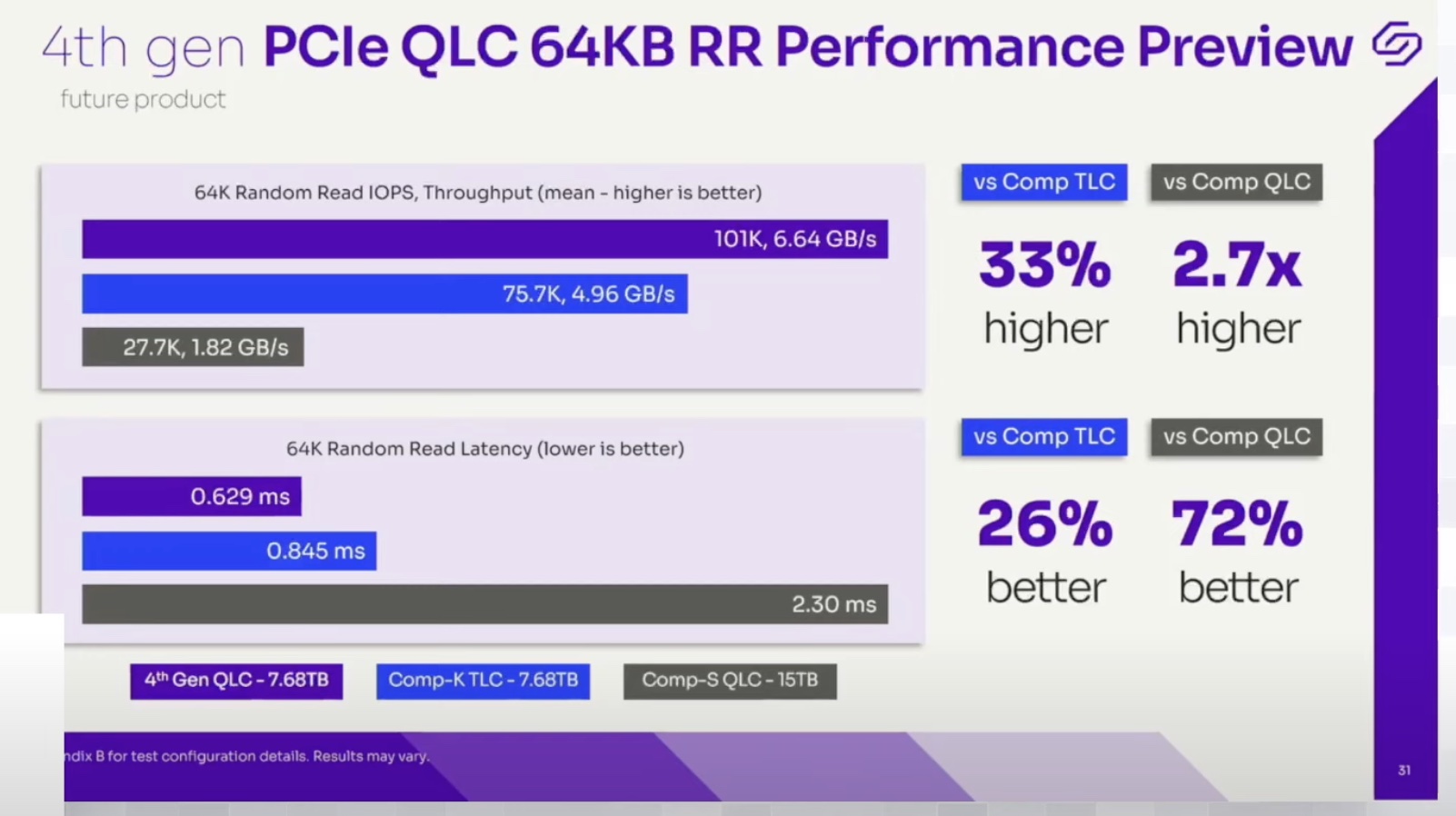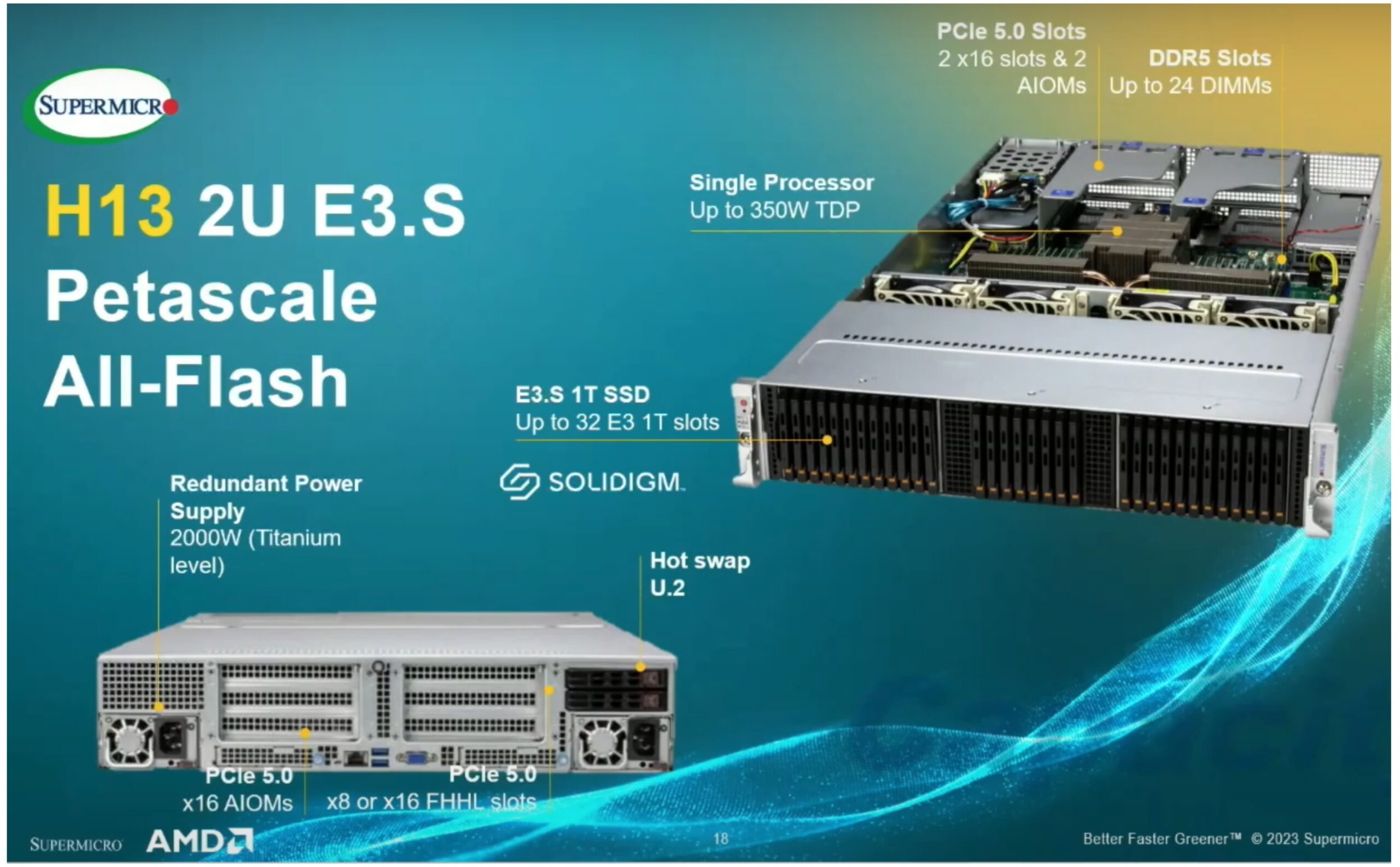As artificial intelligence is rapidly advanced and deployed, the infrastructure supporting training and reference data has emerged as a critical foundation for success. Advanced storage solutions are required to support the intensive demands of AI applications for speed, efficiency, and scalability. This gives rise to the concept of “AI Data Infrastructure,” storage and data platforms required to support AI applications. Throughout 2024 we are exploring the relationship between AI and storage, from a series of articles following AI Field Day through a season of the weekly Utilizing Tech podcast through the summer, to a Tech Field Day event focused on AI Data Infrastructure in October. We are learning about AI data infrastructure from our peers, key companies like Solidigm and their partners, and end users deploying modern AI solutions.

The Crucial Role of Storage in AI
AI applications are notorious for their extreme I/O demands, requiring robust and responsive storage solutions to function optimally. Jim Czuprynski in his article highlights the complexity of AI workloads and their storage needs, particularly emphasizing the economic impact of underutilized resources: “An idle GPU is one of the highest infrastructure debts in the enterprise AI computing landscape.” This truism came up throughout season 6 of Utilizing Tech as well, where the conversation frequently returned the need for storage that not only keeps GPUs continuously busy but also handles different data access patterns efficiently.
The performance of AI systems is directly linked to the efficacy of the underlying storage technology. Efficient storage systems ensure that AI models operate without interruption, a critical factor in environments where downtime can mean significant financial losses. Jeffrey Powers notes that “storage needs to run efficiently, and at speed, so that GenAI models can run optimally without stopping even for a second.” The emphasis on speed and efficiency reflects the direct impact of storage performance on the overall effectiveness and reliability of AI applications.
Advancements in storage technology, particularly through companies like Solidigm, have been pivotal in meeting these AI demands. As discussed in Ben Young’s article, NAND flash storage devices (SSDs) are preferred due to their large capacities and efficiency advantages over traditional hard disk drives: “Big storage capacity ensures that there is enough space to house the burgeoning datasets that are utilized in the AI workflow.” Expansive and scalable storage solutions are required to accommodate the growing data requirements of AI systems.
Integration of AI Data Infrastructure
The management of AI workloads requires a structured approach to data handling, which is facilitated by advanced storage architectures. Andy Banta details how Supermicro and Solidigm address these requirements through a tiered system architecture that optimizes data flow from ingestion to processing and long-term storage. This structured approach ensures that each phase of the AI workflow is supported by appropriate storage solutions, enhancing the efficiency and speed of AI operations.
Sustainability is an important aspect of modern IT infrastructure, and this is especially true of power-hungry AI deployments. The partnership between Supermicro and Solidigm focuses on creating environmentally friendly datacenter solutions. These solutions not only meet the demanding requirements of AI workloads but also significantly reduce energy consumption and physical space requirements, aligning with broader environmental goals.
As Colleen Coll discussed, the relationship between AI development and storage technology is complex. As demonstrated throughout Solidigm’s presentation at AI Field Day, each phase of the AI pipeline (from data ingestion to inference) has specific storage demands. Storage isn’t just a repository but a dynamic component that must be tailored to support the intensive and varied data handling requirements of AI systems.
Diving Deeper Into AI Data Infrastructure
Looking ahead, we will continue to explore the role of AI data infrastructure through Season 7 of Utilizing Tech as well as at our upcoming Tech Field Day events. As AI applications grow more complex and data-intensive, the need for innovative storage solutions that can handle massive datasets, ensure high-speed data access, and provide reliable and sustainable operations will only intensify. The insights from the Utilizing Tech podcast and the contributions of Solidigm and their partners will be crucial in navigating these challenges.
The integration of advanced storage solutions into AI data infrastructure is fundamental to the success and scalability of AI technologies. Efficient, scalable, and sustainable storage solutions are not merely supportive elements but are central to the operational excellence and innovative potential of AI systems. As AI continues to transform industries, the evolution of AI data infrastructure will play a pivotal role in enabling these technologies to reach their full potential, driving forward the next generation of technological advancements.
For more on Solidigm and their products, head over to their website. You can watch their AI Field Day presentations on the Tech Field Day website. Solidigm is also featured on our current season of Utilizing Tech and will cohost our next season beginning June 6, 2024.




